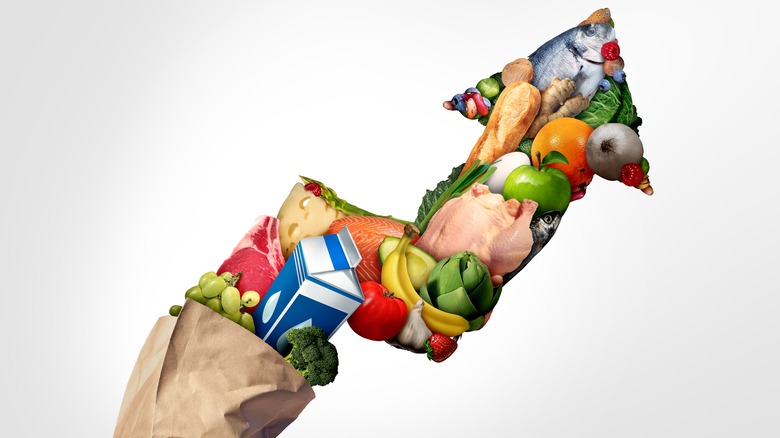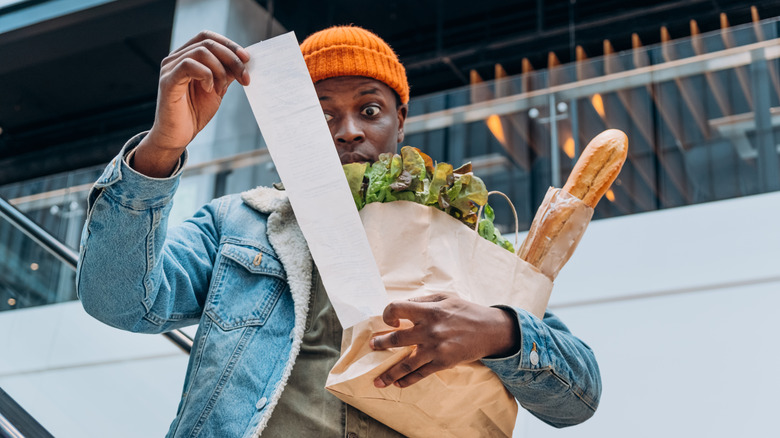New Report Reveals Who Is Suffering The Most From Food Inflation
The word "inflation" gets tossed around like a political football in times of rising costs. When rising prices hit wide swaths of the population, the game gets more serious, affecting everyday living costs for housing, healthcare, transportation, services, salaries, and fuel and energy costs. The list goes on, but for certain populations, the soaring cost of food perches atop that anxiety-ridden list.
Grocery shopping on a strict budget has always been stressful, and the Covid-19 pandemic has added new layers. In April 2020, the Washington Post called grocery stores "anxiety-filled hellscapes" with unmasked carriers of the disease (aka our neighbors) fighting for basic supplies. But two-plus years down the road, the sharp rise in food inflation makes that trip to the grocery store even more consequential, according to a new health survey and resulting report.
Alonzo Plough from the Robert Wood Johnson Foundation, one of three organizations conducting a collaborative study on current food inflation, notes how the pressures of inflation impact some people far more than others, reportedly due to inherent societal inequities. Here's a look at that joint study and who currently suffers the most from food inflation in America.
The communities hit hard by inflation
In the collaborative study by NPR, the Robert Wood Johnson Foundation (RWJF), and the Harvard T.H. Chan School of Public Health, it becomes clear that people of color suffer more, and more quickly, from food inflation. In turn, that results in climbing rates of food insecurity in lower-income communities.
The poll of almost 4,200 adults took place between May 16 and June 13, 2022. Results revealed that while 21% of White adults are experiencing serious food affordability issues, a troublesome 39% of Native Americans, 32% of Blacks, and 30% of Latino adults have the same problem, per RWJF.
It's no surprise when food insecurity rises along with grocery store prices. According to the July 2022 Food Outlook Report by the U.S. Department of Agriculture, in-store grocery prices increased 12.2% in the past year alone. That hits the pocketbooks of all Americans, but inflation in other sectors exacerbates the issue in racial/ethnic minority communities impacted more by the unaffordable housing market, job insecurity, medical costs, and a lack of available resources, according to an NPR survey analysis. Emergency savings are scarce for 58% of Black and Native American families and 53% of Latinos, compared to 36% of White adults, leaving little to fall back on when food costs rise, notes RWJF.
Alonzo Plough stresses the need for solutions that build more equitable futures across American communities. One step in that direction, reported by U.S. News in July, is impending legislation to overhaul child nutrition policies.

